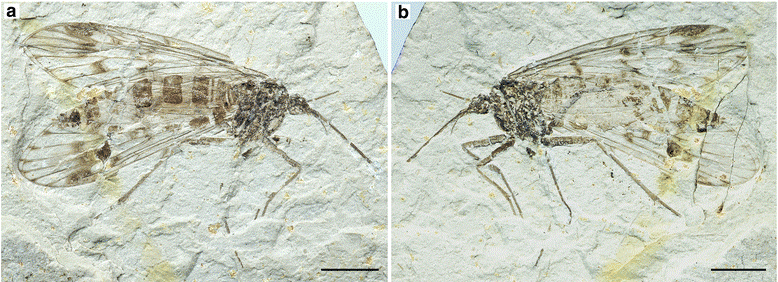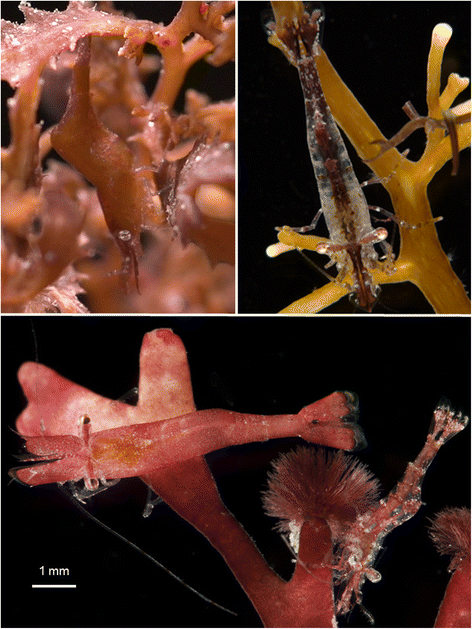
Artist’s reconstruction of the scorpion Opsieobuthus tungeri, a 291 million year old species newly described in Dunlop et al. “Permian scorpions from the Petrified Forest of Chemnitz, Germany“.

Skulls of different genus of the pocket gopher. From Marcy et al. “Getting a head in hard soils: Convergent skull evolution and divergent allometric patterns explain shape variation in a highly diverse genus of pocket gophers (Thomomys)“.

Throat colors of the polymorphic tawny dragon lizard. From Rankin et al. “The genetic basis of discrete and quantitative colour variation in the polymorphic lizard, Ctenophorus decresii“.

Confocal laser scanning microscopy of various parts of the nervous system of the bone-eating worm Osedax. From Worsaae et al. “Neural reconstruction of bone-eating Osedax spp. (Annelida) and evolution of the siboglinid nervous system“.

Newly described fossil scorpionfly species Lichnomesopsyche daohugouensis. From Lin et al. “New data from the Middle Jurrassic of China shed light on the phylogeny and origin of proboscis in the Mesopsychidae (Insecta: Mecoptera)“.

Comparison of the wing pattern of the butterly Sabatinca doroxena with the groundplan of other nymphalid butterflies. From Schachat & Brown “Forewing color pattern in Micropterigidae (Insecta: Lepidoptera): homologies between contrast boundaries, and a revised hypothesis for the origin of symmetry systems“.

Scanning electron micrographs of coupled male and female Drosophila pachea genitalia at 10 min after the beginning of copulation. From Rhebergen et al. “Drosophila pachea asymmetric lobes are part of a grasping device and stabilize one-sided mating“.

Color morphs of the marine shrimp Hippolyte obliquimanus. From Duarte et al. “Shape, colour plasticity, and habitat use indicate morph-specific camouflage strategies in a marine shrimp“.

Light microscope photographs depicting different epidermal cell types observed in the southern African plant genus Oxalis. From Jooste et al. “The phylogenetic significance of leaf anatomical traits of southern African Oxalis“.

Distribution of Anolis distichus subspecies in the Dominican Republic. From Ng et al. “Adaptive signal coloration maintained in the face of gene flow in a Hispaniolan Anolis Lizard“.

Regeneration in the annelid worm Typosyllis antoni. From Weidhase et al. “On the role of the proventricle region in reproduction and regeneration in Typosyllis antoni (Annelidia: Syllidae)“.

Ixodes, one of the oldest examples of a living tick genus, preserved in amber for almost 50 million years. From Dunlop et al. “Microtomography of the Baltic amber tick Ixodes succineus reveals affinities with the modern Asian disease vector Ixodes ovatus“.
Want more evolutionary biology themed pictures? Earlier this year we celebrated the journal’s 15th anniversary by choosing our 15 favourite images from the journal’s life.
Comments